This article dives into how motivating operations (MOs) in Applied Behavior Analysis (ABA) can really help with behavior change. By using MOs strategically—like setting up operations to boost the effectiveness of reinforcers or abolishing operations to lessen unwanted behaviors—therapists can customize their interventions to meet individual needs. This tailored approach can lead to meaningful improvements in behavior and engagement, making a real difference for everyone involved. Let’s explore this together!
Understanding the intricacies of behavior is super important in Applied Behavior Analysis (ABA) therapy, especially when we look at motivating operations. These environmental factors not only influence how effective reinforcers and punishers are but also hold the key to unlocking meaningful behavior change in individuals. By diving into the different types of motivating operations—like:
you'll see how these concepts can be strategically applied to enhance therapeutic outcomes.
But here's the challenge: how can caregivers and therapists effectively identify and use these motivating operations to encourage positive behaviors and reduce undesired actions? 🤔 This exploration promises some valuable insights and practical strategies for anyone involved in the journey of behavior modification. Let’s explore this together!
Motivating operations ABA examples are essential environmental factors that greatly affect how well reinforcers and punishers work in ABA therapy. At Rori Care - ABA Therapy, we make it a point to use motivating operations ABA examples strategically, tailoring our interventions to meet the unique needs of each individual. This ensures that our approach is both personal and evidence-based. For example, motivating operations ABA examples illustrate that when a child feels hungry, food becomes a much stronger motivator for encouraging positive behaviors.
Research shows that using motivating operations ABA examples can lead to impressive improvements in behavior. For instance, studies indicate that giving kids access to their favorite items before sessions can reduce problem behaviors to about 20%—a significant drop from 61% without access. Plus, it can increase academic engagement to 83%! By understanding and modifying these operations, our skilled behavior analysts create a more engaging and responsive therapeutic environment. This not only supports personal growth but also invites families to actively participate in their child's development.
Caregiver education is vital in this journey. It empowers caregivers with the tools they need to make informed choices and offer better support at home. As highlighted by O'Reilly et al., recent research has shown the clinical significance of motivating operations ABA examples in the assessment and treatment of individuals with developmental disabilities. However, we must also consider how the length of access needed for satiation can vary, impacting the effectiveness of these interventions.
By navigating these complexities and continuously evaluating and adjusting personalized plans, we can make sure our strategies are effective and adaptable to each person's unique situation. Let’s explore this together! We’re here to help you every step of the way!

Establishing operations (EOs) serve as motivating operations ABA examples that play a vital role in enhancing the effectiveness of reinforcers in therapeutic practices. Imagine a young one who hasn't eaten for several hours; suddenly, food becomes a powerful motivator for their actions! By recognizing these conditions, therapists can utilize motivating operations ABA examples to time reinforcements perfectly, meeting the individual's needs and boosting the chances of desired behaviors. This approach not only increases engagement but also fosters a more positive therapeutic experience.
Behavior analysts emphasize the significance of understanding how the timing of reinforcements connects to motivating operations ABA examples for maximizing treatment effectiveness. By weaving EOs into their treatment plans, therapists can create personalized strategies that significantly improve outcomes for youth facing Autism Spectrum Disorders, ADHD, and other behavioral challenges. Plus, using progress report data allows for ongoing adjustments to treatment plans, ensuring that interventions remain effective and tailored to each individual's unique needs. Let’s explore this together and find the best path forward for your child!
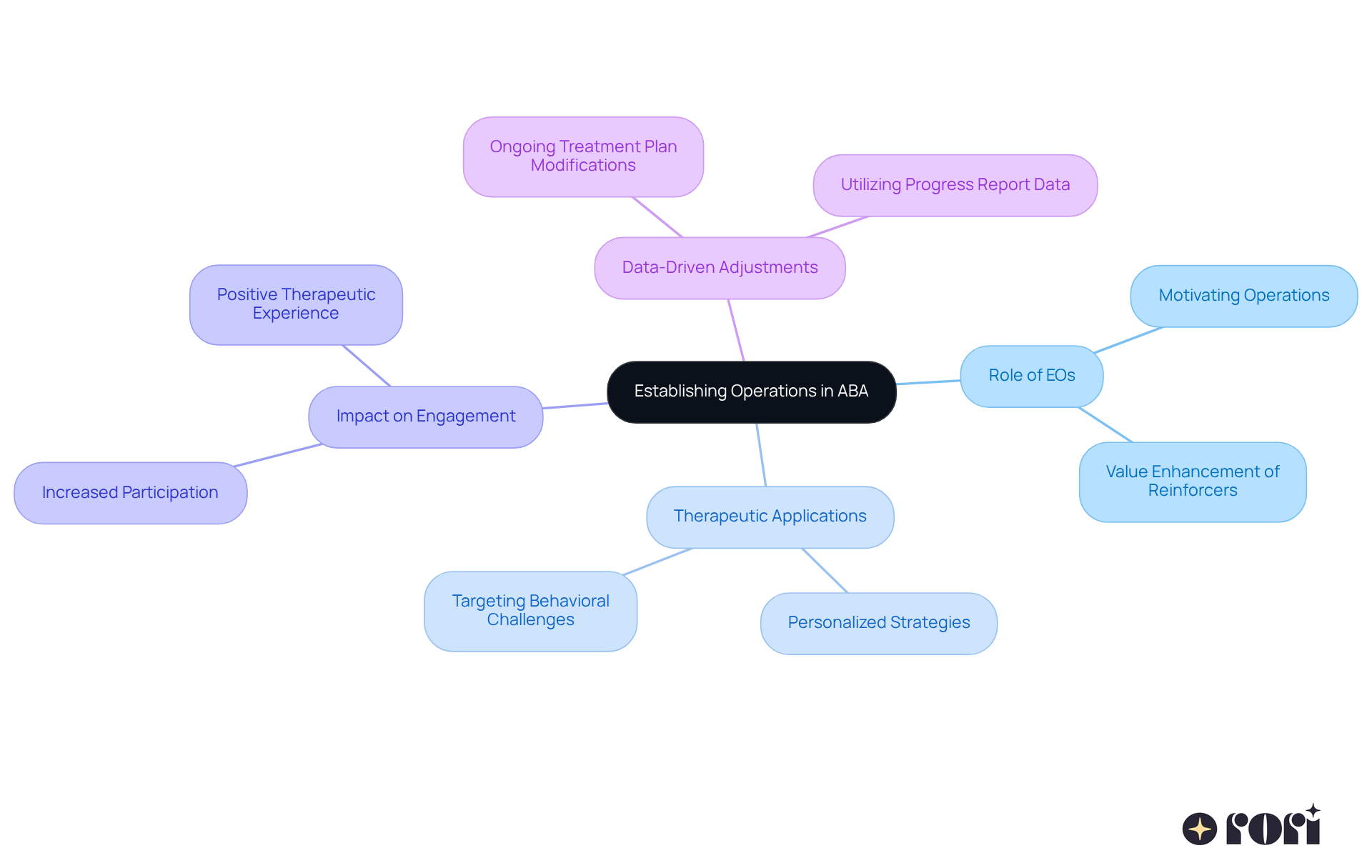
Abolishing operations are key in reducing the effectiveness of reinforcers, which helps lower the chances of unwanted behaviors. For instance, think about a child who has just enjoyed a big meal; their desire for more food drops significantly. This idea is really useful in ABA therapy, where we can identify and adjust specific conditions as motivating operations ABA examples to help decrease those pesky undesirable actions.
Research shows that problem behaviors tend to spike during establishing operation (EO) conditions compared to abolishing operation (AO) conditions. This highlights how much our environment can influence behavior. By creating a structured setting where certain reinforcers lose their effectiveness, therapists can make a big difference in behavioral outcomes.
For example, when a teacher limits access to a favorite treat, it can actually make that treat seem more appealing. But once the treat is given, its value goes down, leading to fewer actions related to wanting that snack. By strategically manipulating motivating operations aba examples, clinicians can foster a more supportive therapeutic environment, which ultimately enhances treatment effectiveness.
Additionally, Rori Care's conduct care engine performs functional conduct analysis for target behaviors and skills, generating automatic progress reports for clinicians. This process not only helps in identifying effective strategies but also empowers caregivers by involving them in planning and assessing their child's behavioral goals. Together, we can ensure that actions remain responsive to each individual’s evolving needs. Let’s explore this together!
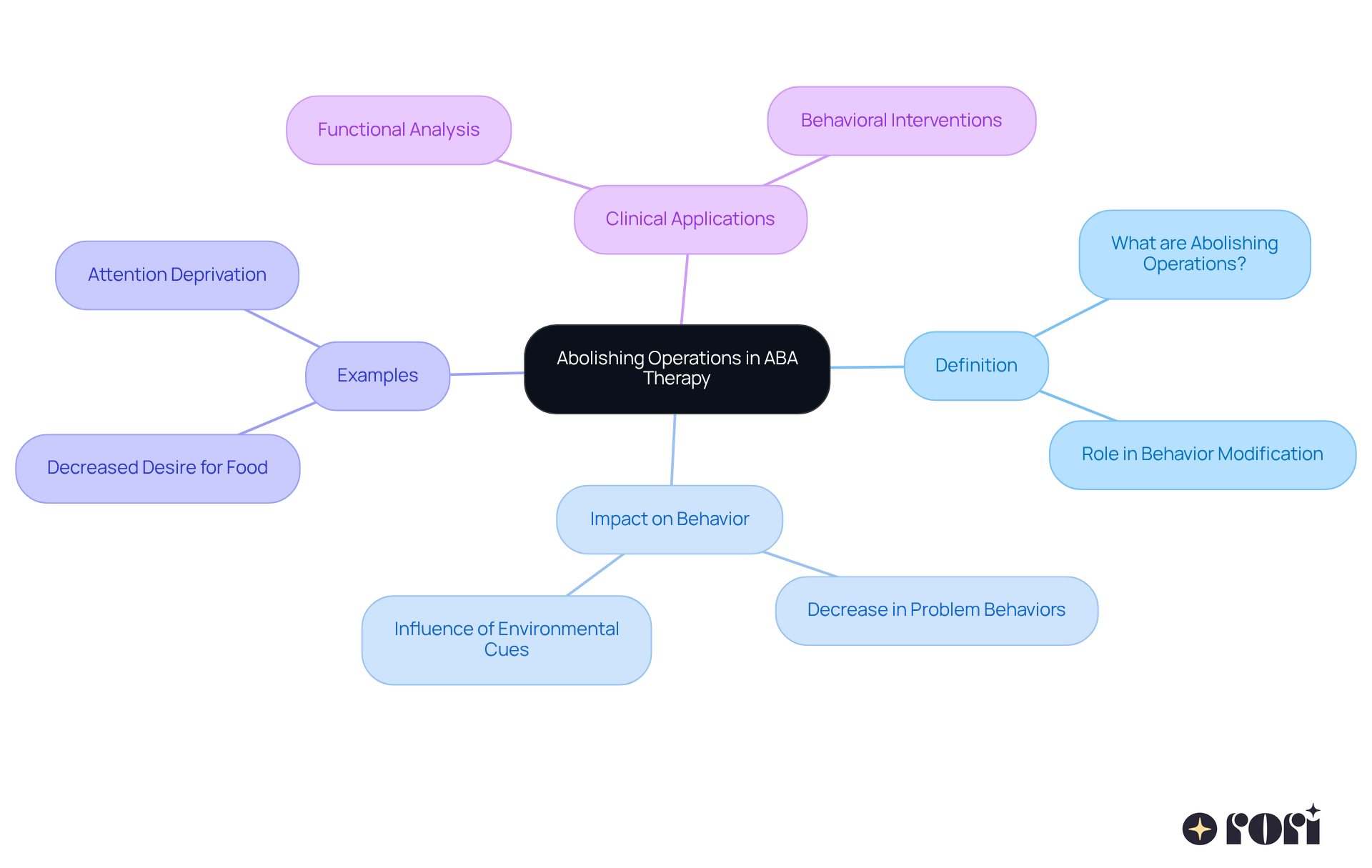
Unconditioned motivating operations (UMOs) are those natural influences that shape our actions without needing any prior learning. Think about hunger—it's a perfect example! When we’re hungry, we instinctively seek out food. Research shows that when we’re deprived of food, its value to us actually increases. In the world of ABA therapy, understanding natural motivators is essential for clinicians to develop effective motivating operations ABA examples that truly connect with a young person's instinctual needs.
By tapping into UMOs, therapists can develop motivating operations ABA examples that not only engage kids but also align with their natural behaviors. This approach fosters a more responsive and effective therapeutic environment. It’s all about increasing the chances for positive behavior change and supporting the young person’s overall growth by addressing their core motivations.
Certified behavior analysts play a crucial role in this journey. They craft personalized plans that feature measurable goals and evidence-based strategies tailored to each child's unique needs. These plans are regularly assessed and adjusted based on progress data to ensure they stay effective.
As one expert wisely points out, 'Using MOs thoughtfully means evaluating each individual’s unique motivations and adapting the environment accordingly.' Parents can really benefit from this insight! By observing their children’s natural behaviors and preferences, they can create opportunities that align with these motivators.
Plus, when caregivers are equipped with ABA principles and strategies, they can better support their children’s behavioral goals through active involvement and data collection. This ultimately leads to improved behavioral outcomes. Let’s explore this together! We’re here to help you every step of the way!
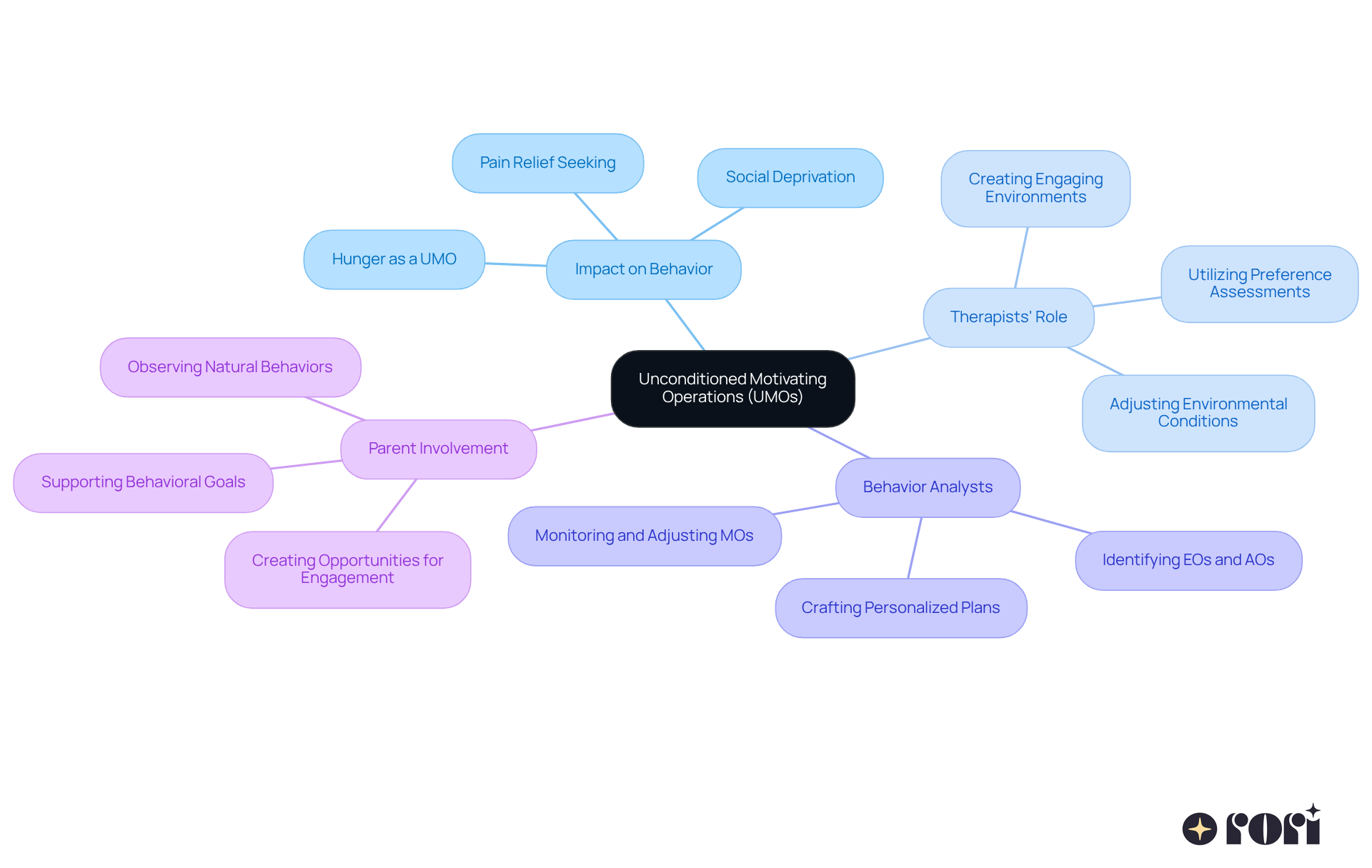
Conditioned motivating operations (CMOs) are learned influences that can really change how effective reinforcers are, based on our past experiences. For example, when a child has been praised for completing a task before, the anticipation of that acknowledgment can be a powerful motivator for them to do it again. This idea is crucial in understanding motivating operations ABA examples. By understanding CMOs and utilizing motivating operations ABA examples, therapists can create a more responsive environment that encourages positive behaviors through these learned connections.
Research shows that using CMOs can lead to greater engagement and fewer challenges for individuals with autism spectrum disorder (ASD). In a review of 61 studies, it was found that mand training with CMOs had medium to strong effects in 66% of participants. This highlights just how important these learned influences are in behavior modification practices. By systematically checking for potential motivating operations ABA examples through organized checklists, caregiver interviews, and direct observation, therapists can tailor interventions to meet each individual’s unique needs, ultimately boosting the effectiveness of ABA therapy.
Let’s think about this: when a child is denied a favorite item, the value of that item goes up, making them more likely to ask for it. This shows how past experiences and the environment can shape actions in therapy. Plus, deprivation acts as an Establishing Operation (EO), which increases the child’s motivation to seek that item. By utilizing motivating operations ABA examples, analysts can encourage positive behaviors and improve the overall quality of life for children with ASD, demonstrating the powerful impact of learned influences in behavior change.
To help parents make the most of this knowledge, consider watching how your child reacts to different situations and spotting any potential CMOs that might affect their behavior. This insight can help you create supportive environments that foster positive interactions and learning moments. Plus, educating caregivers equips you with the tools and skills to align with therapeutic strategies, like data collection and strategy alignment, enhancing your ability to support your child’s behavioral goals effectively. Remember, getting involved in your child’s learning journey can make a significant difference in their development. Let’s explore this together!

Functional assessment methods are structured strategies designed to identify the motivating operations ABA examples that influence behaviors in youth with autism. These assessments typically involve direct observation across various contexts, allowing clinicians to gather rich data on individual reactions and explore the environmental factors at play. For instance, one study found that understanding motivating operations ABA examples can significantly enhance intervention effectiveness. This insight enables therapists to tailor strategies that address the root causes of behaviors, rather than merely their symptoms.
Recognizing MOs means looking at the triggers and outcomes of behaviors, which can reveal the core motivations driving a young person's actions. For example, if a child frequently shows disruptive behavior during transitions, a functional assessment might uncover that they are seeking attention or trying to avoid a task. By pinpointing motivating operations ABA examples, clinicians can develop targeted strategies that not only reduce challenging behaviors but also promote positive alternatives.
The power of functional assessments in identifying motivating operations ABA examples is supported by research showing that interventions based on accurate assessments lead to better outcomes. In one study, 41.8% of goals showed progress after implementing a hybrid approach that combined technology with traditional methods. This highlights the potential for improved data collection and analysis in understanding behaviors.
Ultimately, being able to identify motivating operations ABA examples is essential for developing personalized treatment plans that address each individual's unique needs. By focusing on the specific motivations behind behaviors, ABA therapists can foster meaningful behavior change and help develop crucial skills. This paves the way for greater independence and a better quality of life for youth with autism. Let’s explore this together and see how we can support your child’s journey!
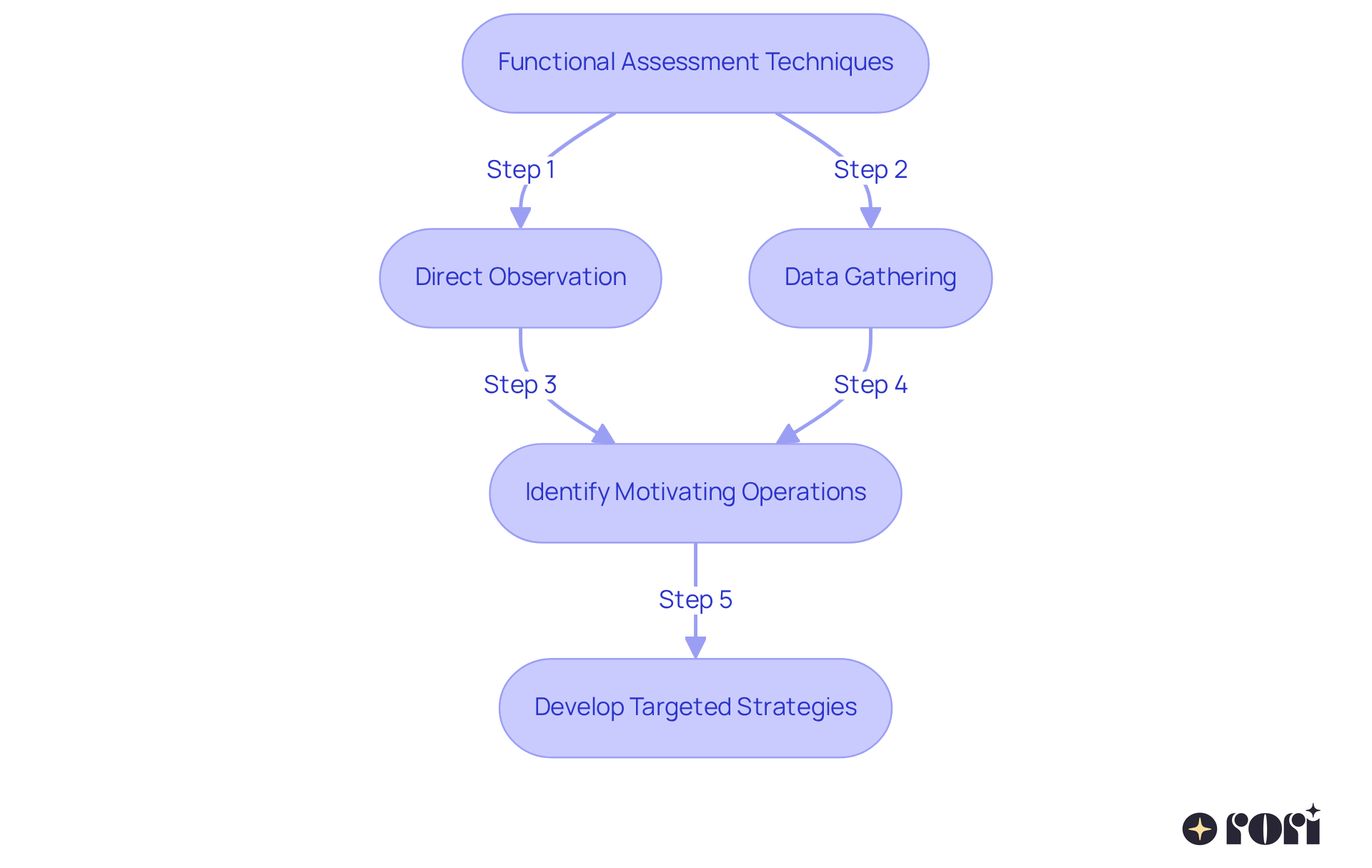
Customizing ABA techniques to include motivating operations ABA examples is so important for creating effective interventions! 😊 For instance, if a young person really enjoys social interactions, therapists can design fun activities that encourage peer engagement as a way to reinforce positive behavior. This personalized approach not only makes the treatment more relevant but also significantly boosts the young person's involvement and responsiveness.
Research shows that motivating operations ABA examples, when aligned with an individual’s specific motivations, increase the chances of achieving meaningful behavioral changes. By focusing on what each young person uniquely needs, clinicians can create an environment where treatment is not just effective but also enjoyable. This leads to better outcomes in communication, social skills, and overall behavior.
Experts agree that this kind of customization is key to maximizing the success rates of ABA treatment. Plus, family involvement is crucial for improving treatment results! When families participate, it fosters a collaborative approach that supports the young person's growth. Caregiver education helps families gain the knowledge and skills they need to actively engage in their child's treatment, ensuring that interventions are tailored and adjusted as the child’s needs change.
This teamwork between caregivers and certified analysts, who develop personalized plans with clear goals and evidence-based strategies, is essential for promoting positive changes and skill development. Let’s explore this together! We’re here to help you every step of the way!
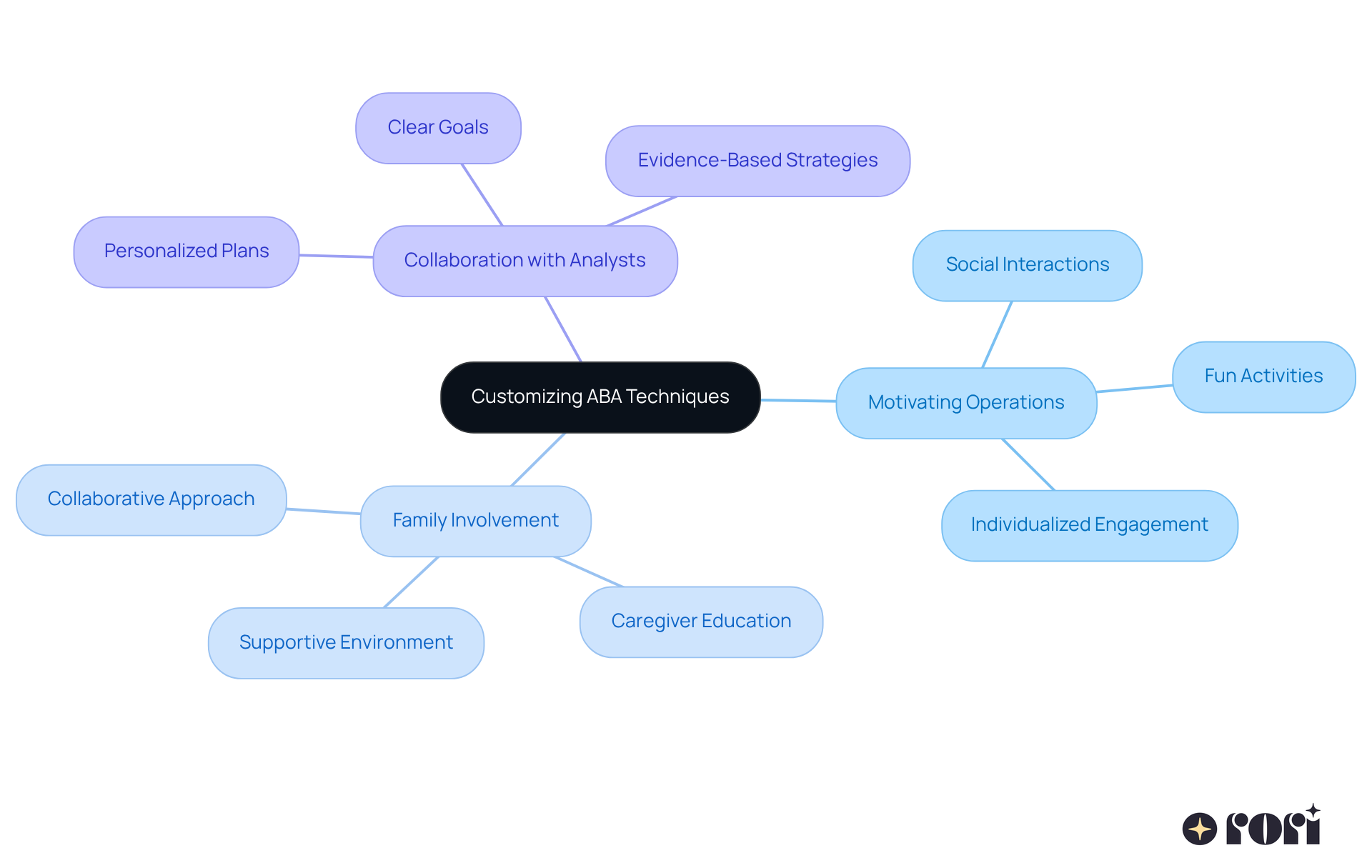
Positive reinforcement techniques are so important for fostering change in ABA therapy! By aligning reinforcers with what truly motivates a young person, therapists can really boost the chances of encouraging those desired actions. For example, if a child is particularly excited about a favorite toy, giving that toy as a reward for completing tasks can be a great way to reinforce positive behaviors. This thoughtful use of positive reinforcement, informed by understanding motivating operations ABA examples, not only encourages immediate compliance but also helps in creating lasting behavior changes over time.
Research shows that using a variety of reinforcement types can keep things fresh and engaging, helping to prevent boredom and maintain motivation. This way, young learners can remain active participants in their educational journey! Plus, by continuously monitoring how effective these reinforcers are, practitioners can adjust their approaches to better fit the child's changing motivations. By skillfully utilizing motivating operations ABA examples, therapists can create a more responsive and impactful therapeutic environment, ultimately enhancing the success of ABA practices. Let’s explore this together and see how these techniques can make a difference!
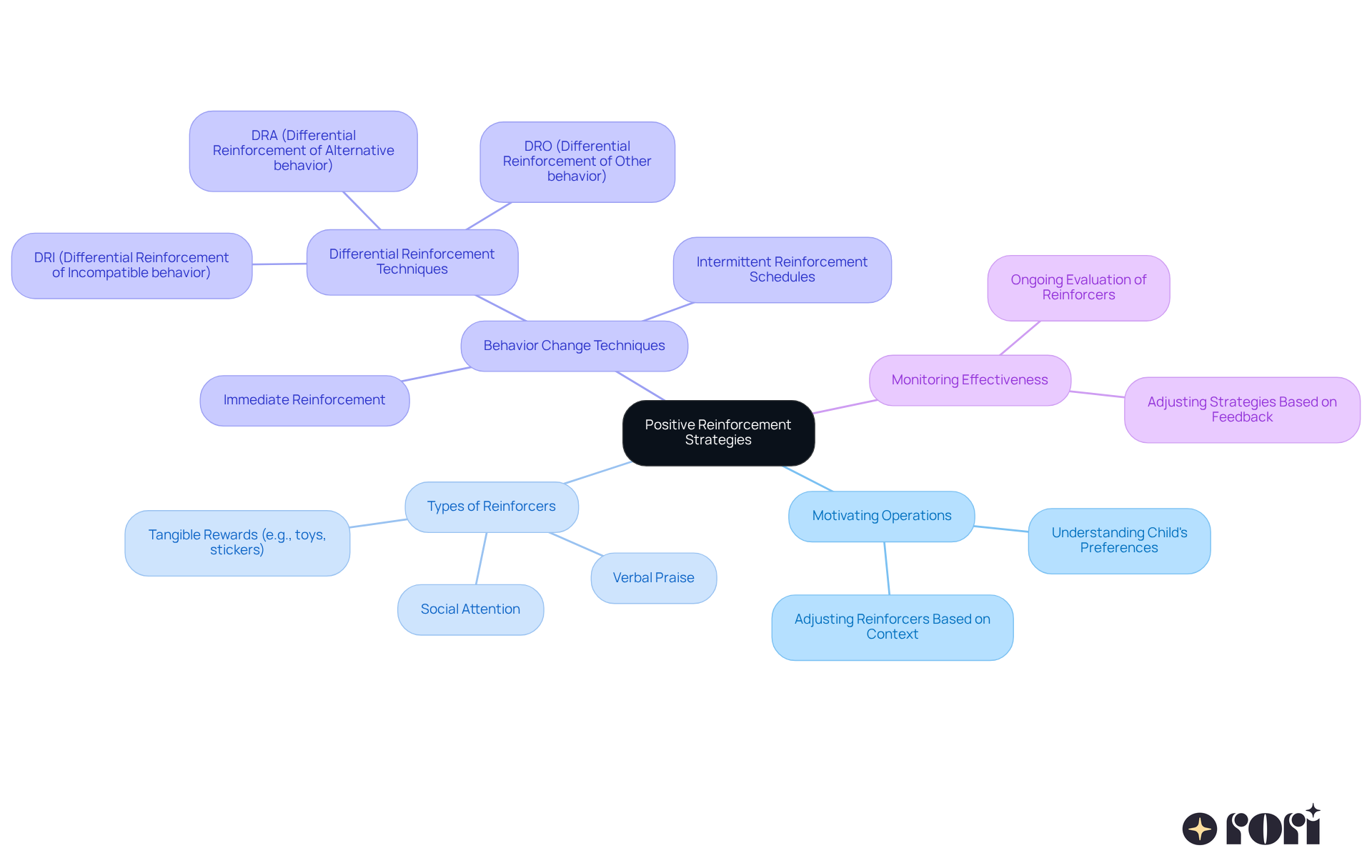
Integrating technology into ABA treatment really enhances how we utilize motivating operations ABA examples! By using data gathering tools and AI-powered analysis, therapists can observe actions in real-time. This means they can quickly adjust strategies based on what a child needs right now. Isn’t that amazing? This tech upgrade not only makes the therapeutic process smoother but also ensures that interventions are responsive and tailored, maximizing the effectiveness of ABA therapy.
For example, AI tools can conduct scatterplot analyses of patient behavior in under a minute. This significantly cuts down the time needed for human analysis, allowing for quicker decision-making. As a result, therapists can use data-driven strategies that promote positive behavioral changes and improve the overall therapeutic experience for young individuals. Let’s explore this together and see how these advancements can make a difference!
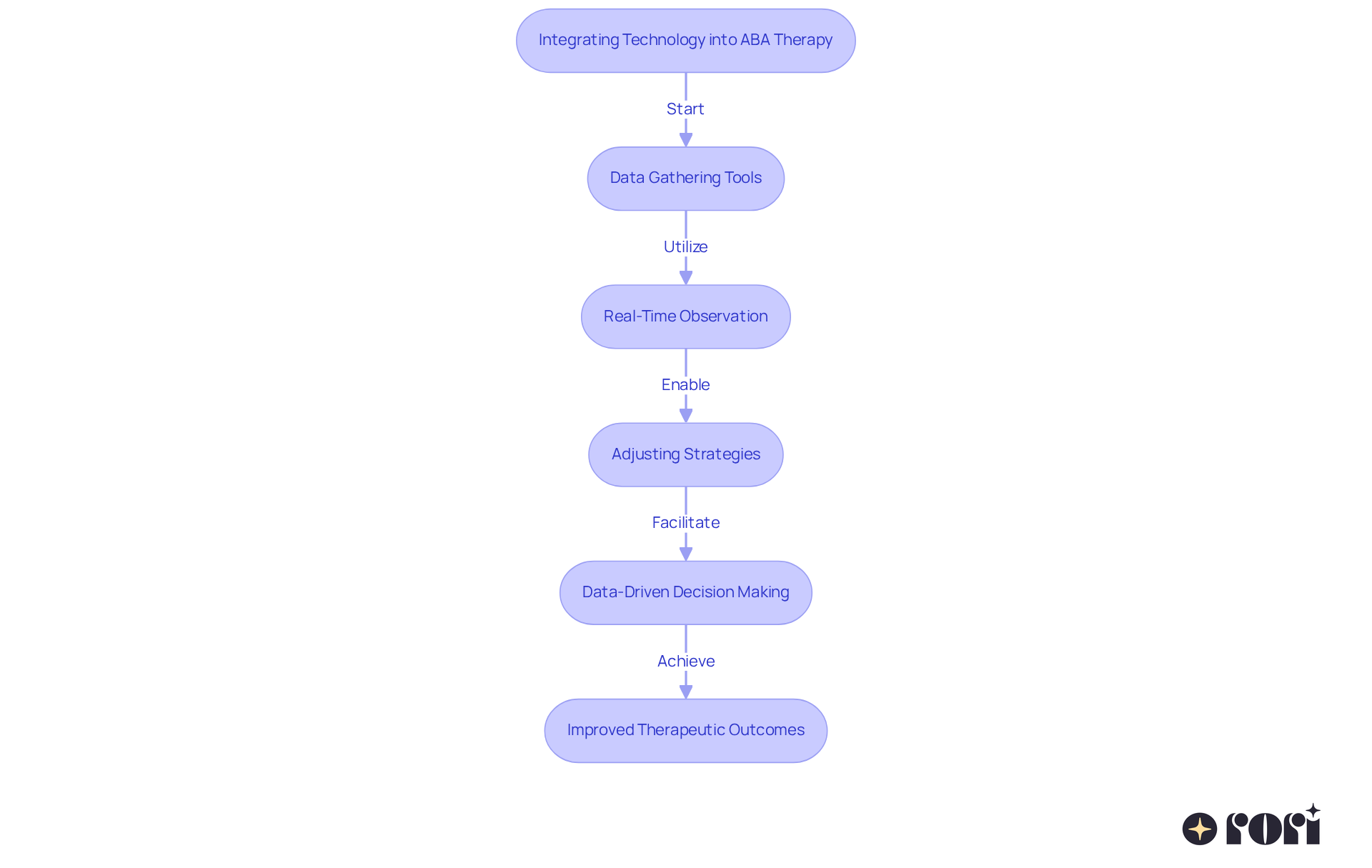
Parental involvement is truly essential for effectively applying motivating operations ABA examples in treatment. When parents identify motivating operations ABA examples related to their children's behavior, they can strengthen desired actions at home, creating a stable atmosphere that aligns with therapy goals. For example, if a child responds positively to praise, parents can offer verbal affirmations to encourage such behavior. This collaborative approach not only boosts the effectiveness of interventions but also empowers families to take an active role in their child’s development.
Research shows that kids whose parents are actively involved in counseling can see improved results by as much as 30%! Plus, structured parent training provides families with the skills they need to implement effective strategies, enhancing the overall therapeutic experience. By bridging the gap between counseling and home life, parents can create opportunities for their children to apply the skills they've learned, ultimately fostering independence and resilience.
As one expert wisely noted, 'Involving parents in ABA therapy fosters a more supportive learning atmosphere for kids.' This partnership between parents and therapists is vital for nurturing a child's growth and ensuring that skills are generalized across various settings. So, let’s explore this journey together and see how we can make a positive impact on our children’s lives!
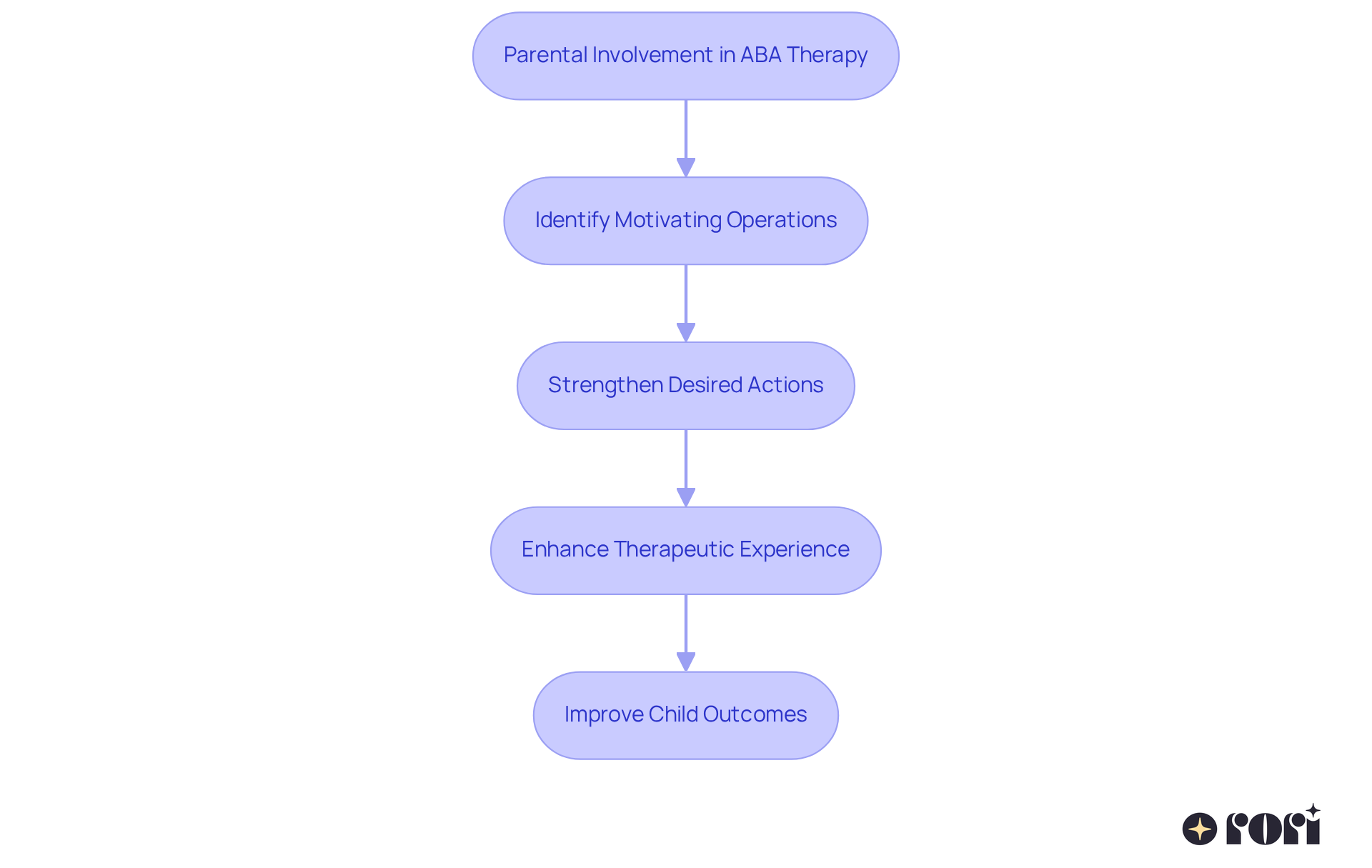
Understanding and effectively applying motivating operations in ABA therapy is so important for fostering meaningful behavior change! By tailoring interventions to meet individual needs—like establishing and abolishing operations—therapists can really boost the effectiveness of reinforcement. This personalized approach not only supports each child's unique motivations but also creates a more engaging therapeutic environment that encourages positive behaviors.
Throughout this article, we’ve seen various examples of how motivating operations can be used to improve outcomes in ABA therapy. From exploring unconditioned and conditioned motivating operations to highlighting the importance of caregiver involvement and functional assessments, these insights show just how multifaceted behavior modification can be. Plus, the integration of technology enhances these strategies even more, allowing for real-time adjustments that align with the child's evolving needs.
Ultimately, we can’t underestimate the significance of motivating operations in ABA therapy. By fostering collaboration between therapists and families and employing evidence-based techniques, we create a supportive atmosphere that empowers children on their journey toward growth and independence. Engaging with these strategies not only benefits individual development but also strengthens the overall effectiveness of therapeutic interventions, ensuring that children receive the best possible support. Let’s explore this together!
What are motivating operations in ABA therapy?
Motivating operations are environmental factors that significantly influence the effectiveness of reinforcers and punishers in ABA therapy. They help tailor interventions to meet the unique needs of individuals.
How do motivating operations improve behavior in children?
Research shows that when motivating operations are utilized effectively, such as providing access to preferred items before sessions, problem behaviors can decrease significantly, and academic engagement can increase.
What is the role of caregiver education in ABA therapy?
Caregiver education is essential as it empowers caregivers with the knowledge and tools needed to make informed choices and provide better support at home.
What are establishing operations (EOs) in ABA therapy?
Establishing operations are a type of motivating operation that enhances the effectiveness of reinforcers. They help therapists time reinforcements appropriately based on an individual's current needs.
How do abolishing operations (AOs) function in ABA therapy?
Abolishing operations reduce the effectiveness of reinforcers, which helps decrease unwanted behaviors. By identifying and adjusting conditions, therapists can lower the chances of undesired actions.
How does Rori Care utilize data in their ABA therapy approach?
Rori Care uses progress report data to make ongoing adjustments to treatment plans, ensuring that interventions remain effective and tailored to each individual's unique needs.
What is the significance of the conduct care engine at Rori Care?
The conduct care engine performs functional conduct analysis for target behaviors and skills, generating automatic progress reports that help identify effective strategies and involve caregivers in planning and assessing behavioral goals.